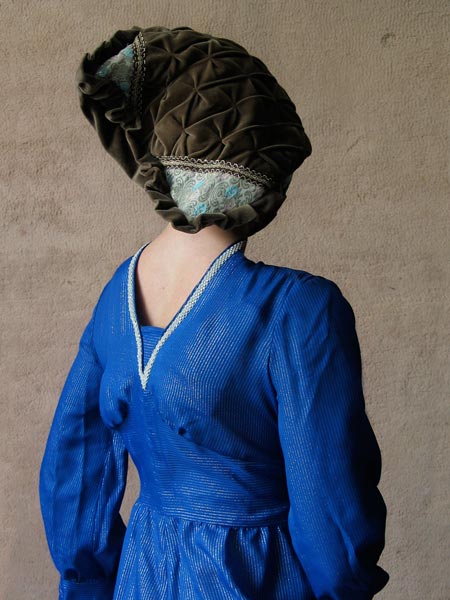
beautyme collections culture cuisine motor music search
 fig.: 'Lady Glittersky' by Thorsten Brinkmann, 2009. (C) Thorsten Brinkmann, VBK, Wien 2013. German sculptor, photographer Thorsten Brinkmann (born 1971 in Nordrhine-Westphalia) himself is the model in his series 'Serial Collector' which appears like collages in classical portrait style made from found objects such as vintage clothing pieces and everyday objects. |
'Faceless' in fashion and art - a reflection of today's daily privacy protection strategies?
Or, have presentations with 'faceless models' like Maison Martin Margiela's 'Artisanal' Spring/Summer 2013 runway show during Haute Couture Fashion Week in Paris other causes such as - a profane reason - less costs for model agencies, or is it the concept of the label in general to appear anonymously?
From 28 June until 1 September 2013, the exhibition 'Faceless' at quartier21 of the MuseumsQuartier in Vienna will reflect today's media culture and people's face popularizing or anonymizing strategies with works by artists like Marina Abramović whose face is her 'brand', or Thorsten Brinkmann (photo of the artist himself as faceless 'Lady Glittersky' on this page), and with contributions from familiar fields such as from fashion like Maison Martin Margiela.
The idea of 'faceless' living in today's society centers around weighing up the pros and contras of anonymity. While there is no question that everybody has the right to privacy as it is a basic human right, in times of shared property - intellectual goods like written texts for example, users have to consider their individual weight for online content. Individual activities like 'sharing', 'voting' with 'likes', and even the metrics 'viewed', 'listened', 'watched' are part of the value of content. And isn't it the essence of Maison Martin Margiela's in Paris presented Spring/Summer 2013 windbreaker dress 'K-WAY' that it is made from embroidery of a clothing piece once worn by a flapper girl? The 'shared' flapper girl embroderies are more valuable than material from a complete anonymous source.
Co-curator Brigitte Felderer applies an additional thought which challenges the theme media culture from the perspective 'reality'. Are the presented physiognomies on the web not only reflections of personal ideas of happiness, recognition, attention or success?
"So what?" could be the answer, "The flapper girl is beloved because of making her personal ideas reality."
Annotation on 26 June 2013: new exhibition dates 4 July - 1 September 2013.
more culture>